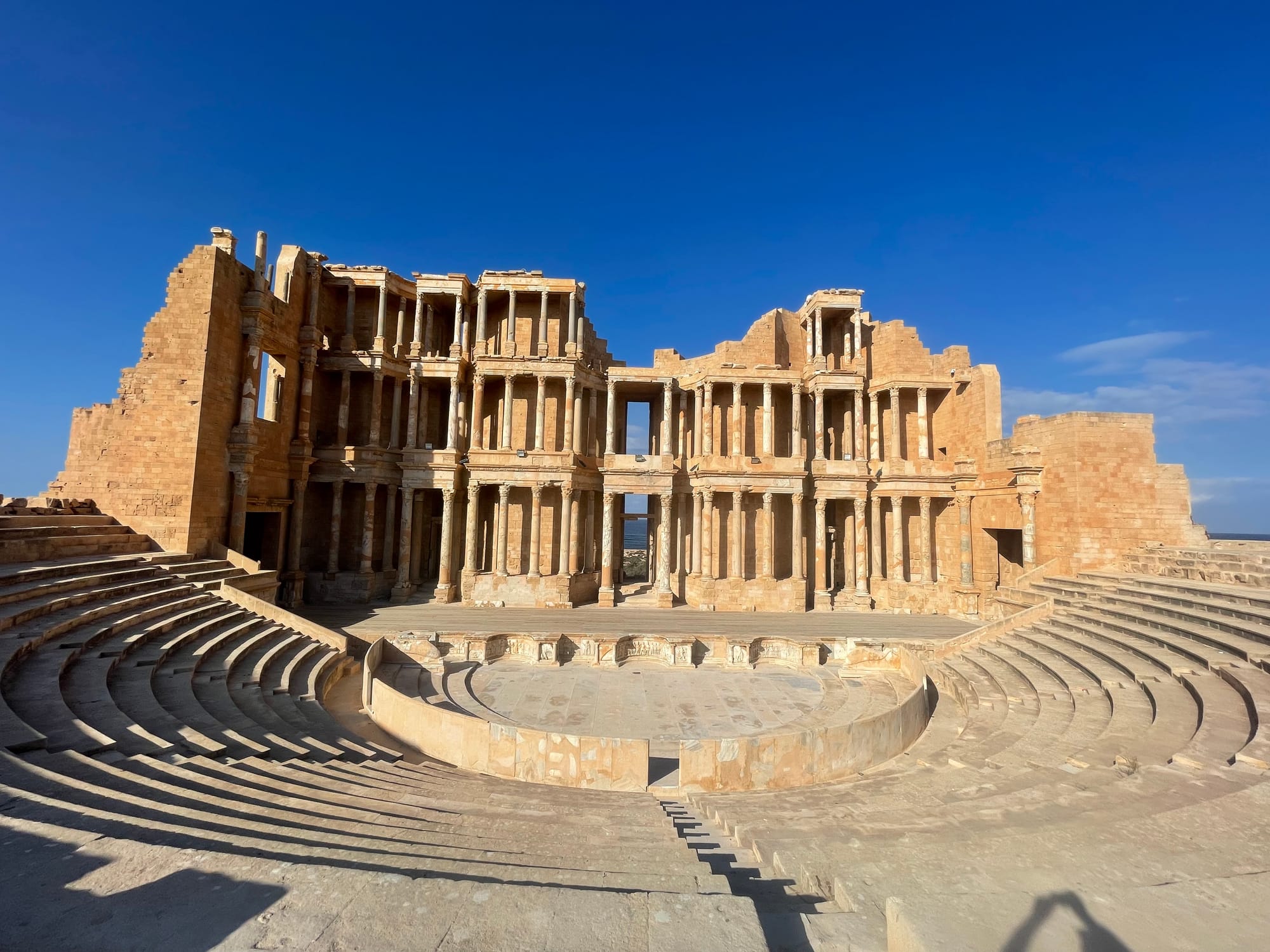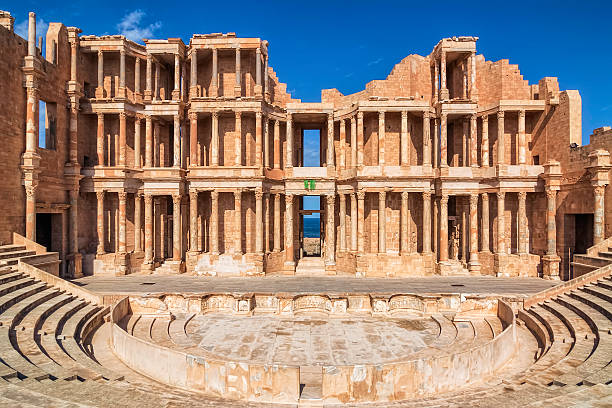Introduction
The Sabratha Theater, located in modern-day Libya, is one of the best-preserved examples of Roman architecture in the world. Constructed in the 2nd century AD, it stands as a symbol of Roman cultural sophistication and engineering prowess. A UNESCO World Heritage Site since 1982, the theater remains a significant historical and architectural landmark.

Architectural Mastery of the Sabratha Theater
Semi-Circular Layout and Acoustic Engineering
The theater’s design features a classic semi-circular layout that ensures optimal acoustics, allowing actors’ voices to carry effortlessly across the audience. This is a hallmark of Roman theater construction, showcasing their advanced understanding of sound and performance.

The Scaenae Frons: A Visual Masterpiece
The most striking feature of the Sabratha Theater is its scaenae frons (stage backdrop), a three-story structure adorned with Corinthian columns and intricate sculptures. This not only enhanced the aesthetics of the theater but also emphasized the grandeur of Roman cultural life and imperial authority.

Seating Arrangement and Capacity
With a capacity of around 5,000 spectators, the theater’s seating was divided to reflect the social hierarchy of Roman society. The design ensured that every spectator, regardless of their status, had an excellent view and could participate in the communal experience of theater.

Restoration and Preservation
In the 1930s, Italian archaeologists undertook an extensive restoration project to return the theater to its former glory. Completed in 1937, this restoration preserved the structure’s integrity, allowing it to host performances once again. Today, ongoing preservation efforts protect the theater from natural and human-induced damage.
![Structurae [en]: Ancient Theatre of Sabratha](https://archeology.dalatcamping.net/wp-content/uploads/2025/01/ancient-theatre-sabratha-libya-04.jpg)
Conclusion
The Sabratha Theater is a prime example of Roman architectural brilliance, from its sound engineering to its artistic embellishments. It remains a testament to the cultural and technological advancements of the Roman Empire, offering invaluable insights into the grandeur of ancient Roman life. As a UNESCO World Heritage Site, the theater continues to inspire awe and admiration.

